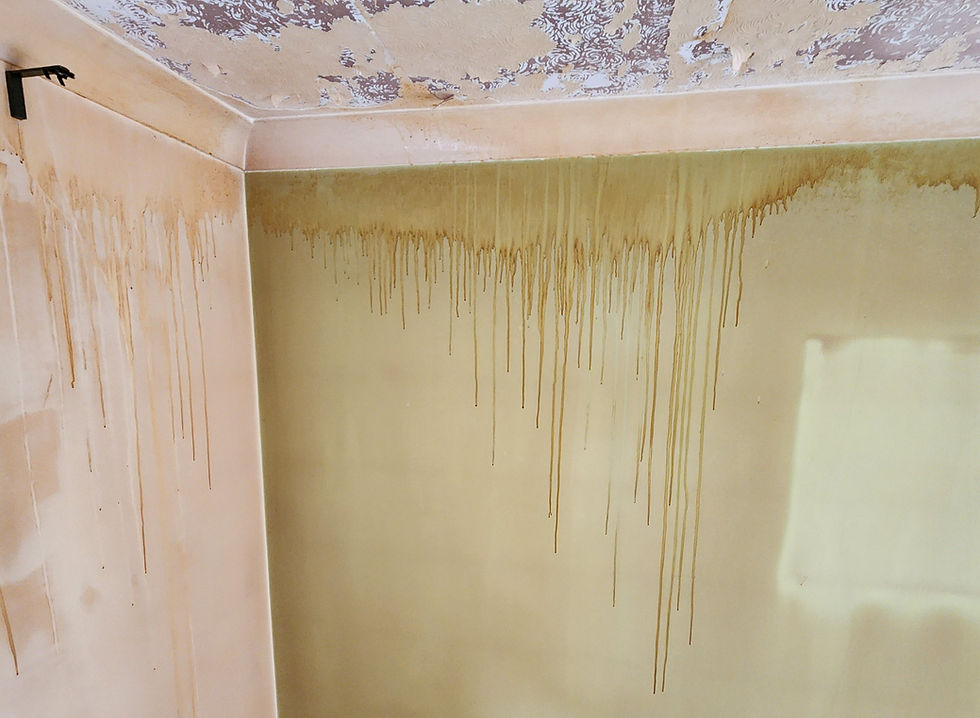What do I need to paint a room? The full UK guide, from tools to techniques.
- Kurt Hatwell
- Oct 5
- 4 min read
How to Paint a Room for Beginners – Tools, Paints, and Step-by-Step Guide
A common question we get from beginners is: what do I need to paint a room? In this guide, we’ll cover not only the essential tools and materials you need, but also the process, best paints to use, and common mistakes to avoid when decorating your home for the first time.

So, picture this: you’ve just moved into a new home and want to change the colour of your living room or bedroom. You’re keen to start, but you’re not sure what you actually need. The last thing you want is to move all the furniture, buy cheap tools, and then realise you can’t get started properly.Keep reading — this guide will give you everything you need to make your first decorating project a success.
What Tools Do You Need to Paint a Room?
Let’s assume you’re starting from scratch. Below is a list of recommended professional-quality tools — not the cheapest options, but reliable items that will last and make the job easier (and more enjoyable). You’ll be able to reuse them for future decorating projects.

Essential Painting Tools
Wooster Sherlock 9-inch Roller Frame
Wooster Sherlock GT 1'–2' Extension Pole
Hamilton Perfection Medium Roller Sleeves (9-inch) ×2
9-inch Roller Tray
Axus Angled Pro Cutter Brushes (2-inch) ×3
Paint Kettles / Scuttles (~1L) ×2 (Wooster Pelican Pro recommended)
4-inch Roller Frame and Hamilton Medium Pile Sleeve
Small Ladder or Step-Up Platform
One Strike Filler
Paint Scraper / Filler Knife
120-Grit Sanding Block
Dust Sheets
Frog Tape Delicate 24mm

Best Paint for Beginners
For first-time decorators, quality trade paints are essential. Avoid consumer-grade paints from DIY chains like B&Q or Wickes — even if they say “Dulux,” they’re not the same as trade paints. Trade paints cover better, apply easier, and require fewer coats, saving both time and money.
Recommended Paints
Ceilings: Dulux Trade Vinyl Matt (White)
Walls: Dulux Trade Vinyl Matt (Tinted – Colour of Your Choice)
Primer for Woodwork: Johnstone’s Trade Joncryl Primer Undercoat
Woodwork Finish: Johnstone’s Trade Aqua Guard Satin (1L)
💡 Tip: Order from a trade paint supplier online or visit a local trade counter for the best prices and authentic trade-grade products.
Why These Tools and Paints?
Wooster Roller & Pole: Professional-grade tools that lock securely together, preventing the roller from unscrewing mid-use — a common frustration with cheaper sets.
Hamilton Roller Sleeves: Great all-rounders that hold plenty of paint and apply smoothly — perfect for beginners.
Axus Brushes: Proven, affordable brushes that cut in neatly without leaving brush marks.
Trade Paints: Provide better coverage, smoother application, and longer-lasting finishes than retail versions.

How to Paint a Room – Step-by-Step
Step 1: Prep the Room
The night before painting:
Remove pictures, blinds, shelves, and hooks.
Fill any holes or cracks with One Strike Filler.
Allow filler to dry overnight so you can sand and paint without delays.
Step 2: Protect and Sand
The next morning:
Lay down dust sheets to protect floors and furniture.
Mask off light switches, sockets, and fittings with Frog Tape.
Lightly sand any filled or rough areas using a 120-grit sanding block.
If needed, apply a second layer of filler and allow it to dry while you start painting other areas.
Step 3: Paint the Ceiling
Pour ceiling paint into your roller tray and paint kettle.
Cut in around the edges and lights with a brush, painting about 1–2cm down the wall for good coverage in corners.
Using your roller and extension pole, paint the ceiling in straight, overlapping strokes (about 1.5m wide).
Work systematically from one side of the room to the other.
Allow to dry for 30–90 minutes depending on coverage — most trade paints cover in one coat.

Step 4: Paint the Walls
Switch to your wall paint and check that all surfaces are smooth and clean.
No primer is needed if the walls have been painted before — trade paints will adhere perfectly.
Start with one wall at a time. Use your brush to cut in along skirting boards and ceilings.
Roll from floor to ceiling in straight lines, overlapping slightly for an even finish ensuring you still use a roller pole. It makes rollering much easier.
Complete each wall while the paint is still wet to avoid lap marks.
Once the first coat is finished, take a break for about 60–90 minutes, then apply your second coat.
Step 5: Paint the Woodwork
Woodwork (skirting, doors, and frames) needs a different approach.
Prime first using Johnstone’s Trade Joncryl Primer Undercoat. This step is crucial if you’re painting over older, oil-based paint — otherwise, the new paint may chip or peel.
Once dry (around 30 minutes), apply your Aqua Guard Satin finish.
Use the 4-inch roller for larger surfaces (doors, wide skirting) and a brush for smaller sections.
Apply thin, even coats to prevent drips. Lightly sand between coats for a smooth finish.
Allow around 90 minutes between coats.
✅ Pro Tip: Water-based satin paints like Aqua Guard doesn’t yellow over time, keeping your woodwork fresh and bright for years.
Common Beginner Mistakes to Avoid
Using cheap retail paints that require multiple coats and leave patchy results.
Forgetting to prime old woodwork before applying water-based paint.
Skipping prep and sanding, leading to uneven finishes.
Painting without a pole, causing fatigue and roller marks.

Final Thoughts
Painting your first room doesn’t have to be stressful. With the right tools, trade paints, and a bit of preparation, you can achieve a professional-looking finish that lasts for years. Invest in quality equipment now, and you’ll find every future project easier, faster, and far more enjoyable. Happy Decorating!




Comments